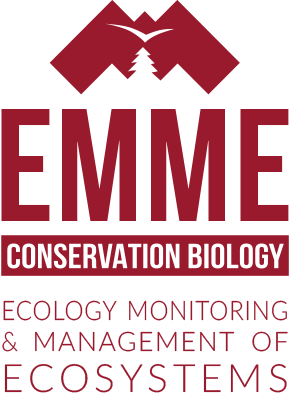Description:
This unit covers the following concepts and tools : principles and sources of ecological cartography; georeferencing; GIS and map algebra; telemetry and on-board measuring equipment; spatial interpolation; database management. These tools are used in a sampling or experimental plan.
Learning objectives:
Theoretical learning outcomes:
• Knowledge of ecological mapping, georeferencing and telemetry methods.
• Acquiring knowledge about analysis of spatial distributions and spatial modelling (objectives, principles, field of application, implementation, interpretation of the results).
• Acquiring knowledge in database systems and to be able to use such systems.
• Acquiring concepts of metrology in the ecological field.
Technical learning outcomes:
• Building a Geographic Information System (QuantumGIS and interface with other GIS) using public databases, satellite data, and georeferenced data from field sessions.
• Using this GIS in order to plan a sampling field session.
• Applying spatial methods of data analysis (Quantum GIS and R software) and correctly interpret the results.
• Writing a concise and precise report concerning the collection and analysis of spatial ecological data.
• Assessing metrological quality of environmental data collected.
Prerequisites:
Knowledge of basic statistics, descriptive statistics, General Linear Models (GLM), anova, χ2, and non parametric statistics.
Teaching Methods:
Lectures, seminars, practicals
Assessment:
Reports on the content of the sessions, oral and written exams.
Recommended Reading:
- Bivand, R.S., Pebesma, E.J., Gomez-Rubio, V., 2013. Applied spatial data analysis with R. Second edition. Springer, New York et web tutoriels (QGIS, etc.).
- Crawley, M.J. 2007. The R book. John Wiley & Sons, Ltd. 942 pp.
- Dalgaard, P. (2002) Introductory statistics with R. Springer 267pp.
- Grafen, A. and Hails, R. 2002. Modern statistics for the life sciences. Oxford University Press, Oxford. 351pp.
- Legendre, P. and Legendre, L. 2012. Numerical Ecology. Elsevier, Amsterdam.
- Pinheiro, J.C. and Bates, D.M. 2000. Mixed effects models in S and Splus. Springer, New York:528 pp.
- Siegel, S. and Castellan, N. J. J. 1988. Non parametric statistics for the behavioral sciences. McGraw-Hill International Editions, New York. 399pp.
- Venables, W. N. and Ripley, B. D. 2002. Modern applied statistics with S. Springer, New York: 501 pp.
- Wood, S. (2006) Generalized Additive Models: An Introduction with R. Chapman & Hall.
- Zuur, A., Ieno, EN., Walker, N., Saveliev, AA., and Smith, GM. 2009. Mixed Effects Models and Extensions in Ecology with R. Springer.
Coordinator:
Patrick GIRAUDOUX, patrick.giraudoux@univ-fcomte.fr





